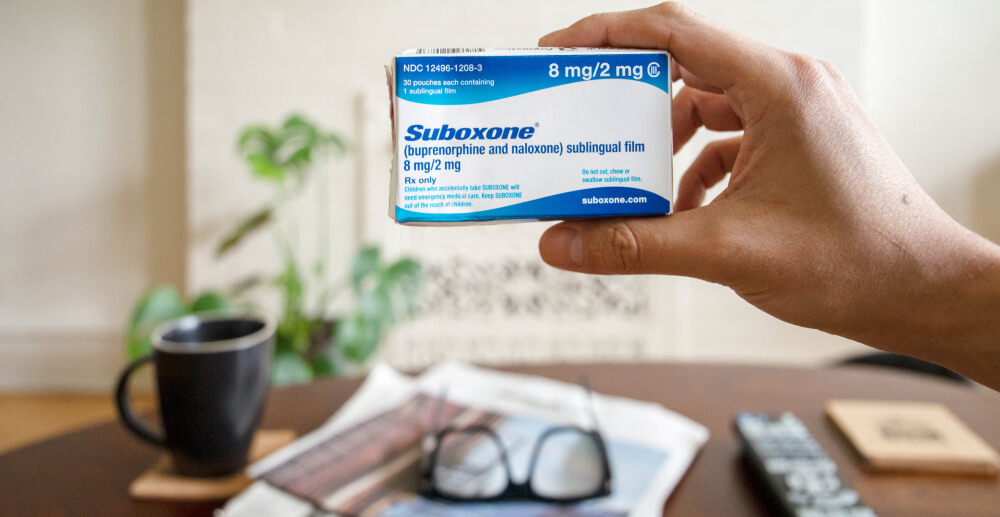What is Belbuca, and is it the same thing as Suboxone? Here are the answers to some common questions about the difference between Suboxone and Belbuca.
There are a lot of buprenorphine medications on the market, and it can be confusing to understand the differences between them. Lately, we’ve been hearing from people asking whether Belbuca is the same thing as Suboxone.
First, a quick recap about opioids and buprenorphine
The brain has three types of opioid receptors that are named after Greek letters: μ (mu), Δ (delta), and Κ (kappa). These receptors have different roles, but the one we’re going to focus on is mu. Mu receptors impact the ways we feel pleasure and pain, as well as many other functions. A substance that binds to the mu opioid receptors in the brain and activates them is called an “opioid agonist.” This category includes the opioids that people take for pain relief as well as recreationally, like morphine, heroin, Vicodin, and fentanyl.
Some substances bind to those same mu opioid receptors but activate them less strongly. These are called “partial opioid agonists.” Buprenorphine is a partial agonist. It forms a tight bond with the mu receptors, but it doesn’t fully activate them, so it does not create the rush of pleasure or high that full opioid agonists can. Some people who are prescribed buprenorphine feel mild euphoria when they first begin taking it, but most people adapt to it quickly and stop feeling any euphoria when they take their dose. Buprenorphine is prescribed to treat opioid use disorder, and sometimes to manage pain.
Both Belbuca and Suboxone are brand names of medications that have buprenorphine as their key ingredient.
The basics about Suboxone
Suboxone—and other brands like Zubsolv—contain buprenorphine and naloxone and are prescribed to treat opioid use disorder. The buprenorphine in these medications functions as described above, partially activating opioid receptors to reduce cravings and relieve withdrawal symptoms. The other ingredient, naloxone, is a full opioid antagonist. This means it binds to opioid receptors without stimulating them, dislodging other opioids and blocking them off in the process. You may have heard of Narcan, which is a naloxone medication administered to stop and reverse an opioid overdose.
So why is an ingredient that stops opioids from working included in an opioid medication? Naloxone has poor oral bioavailability, which means it isn’t absorbed well through the mouth. Suboxone, Zubsolv, and other buprenorphine/naloxone medications come in the form of films or tablets that are dissolved under the tongue (sublingually) or against the cheek (buccally). When taken as directed, the naloxone is basically inert; it doesn’t do anything. However, if the medication is injected (for example, by someone seeking to get high), then the naloxone will kick into effect, overriding and blocking the buprenorphine. This will stop the person from getting high and may cause them to go into precipitated withdrawal, with strong withdrawal symptoms.
Suboxone comes in doses between 2mg buprenorphine and 12 mg buprenorphine. Zubsolv comes in doses from .7 mg buprenorphine to 11.4 mg buprenorphine. The amount of naloxone is generally about a quarter of the amount of buprenorphine (2mg buprenorphine/.5mg naloxone, or 5.7 mg buprenorphine/1.4 mg naloxone).
What is Belbuca?
Belbuca is the brand name of a buprenorphine medication in the form of a film that is dissolved against the cheek (buccally). It is only prescribed for chronic pain. Since it is buprenorphine alone, with no naloxone, it is considered to have more potential for misuse through injection. Belbuca is prescribed in strengths from 75-900 mcg. Note that those dosages are listed in micrograms, which are one-thousandth of a milligram. This means that the amount of buprenorphine in the strongest available film of Belbuca is less than half as much as in the lowest dosage film of Suboxone. This is because Belbuca is intended to treat pain in people who do not have opioid use disorder, not to partially activate mu receptors that are accustomed to being heavily stimulated by opioid use.
So is Belbuca the same as Suboxone?
No. There are differences between these two medications:
- Suboxone is intended to treat opioid use disorder, and Belbuca is intended to treat pain.
- Suboxone contains naloxone to discourage misuse, and Belbuca does not.
- Belbuca contains significantly lower doses of buprenorphine than Suboxone.
However, since Belbuca and Suboxone both include buprenorphine, many of the warnings and possible side effects are the same.
Whichever of these medications is right for you, it should only be taken under the supervision of a clinician. Do not combine multiple kinds of buprenorphine medications, and get the guidance of your healthcare provider before switching between different brands or doses.








